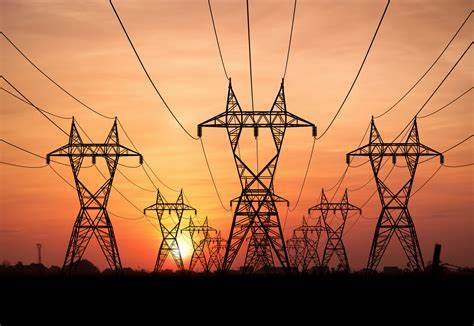SRINAGAR, JULY 5: With successful installation of an over five lakh smart meters at the residences of electricity consumers, the Jammu and Kashmir has become one of the top seven states/UTs in the country in respect to power sector reforms.
The other states, according to the Government of India’s National Power Portal, include Punjab, Haryana, Uttar Pradesh, Rajasthan, Madhya Pradesh, and Assam.
The J&K, with contracts already awarded, has set a definitive plan to achieve 100% smart metering by 2026.
Addressing long-standing legacy issues to a large extent to ensure enhanced service delivery to consumers, the J&K has emerged as a trailblazer in reforming its power sector, an official statement here said. A significant milestone has been achieved through the modernization initiative, replacing obsolete meters with state-of-the-art smart meters, it added.
These advanced technologies promise error-free billing, eliminating human errors and outdated manual systems. They also empower consumers by providing better control over electricity usage and budget management, alongside other benefits like streamlined billing and payment processes.
The UT has also excelled in deploying technologies such as AB cabling and HVDS systems, enhancing system reliability and ensuring public safety.
In the initial phase of reforms, 4,500 circuit kilometers (Ckm) of old wires in congested urban areas have been replaced with modern, fully insulated cables. Additionally, under the ongoing RDSS scheme, approximately 30,000 Ckm of AB cable is being provided.
Further, about 10,000 small HVDS transformers close to consumer installations have been installed in planned colonies, ensuring better voltage regulation and reducing the risk of electricity theft.
An additional 20,000 HVDS transformers are scheduled to be added under the RDSS scheme in next fifteen months as per the feasibility. These initiatives have collectively improved system reliability and significantly enhanced consumer satisfaction.
Efforts to ensure affordable electricity tariffs for consumers have been equally prioritized, with substantial subsidies being provided by the government on the full cost tariff evaluated based on the current price of power procurement and other actual discom expenses approved by the JERC.
Notably, J&K refrained from increasing electricity tariffs during the current financial year (2024-25). In the previous year (2023-24), while metered consumers faced a 15% tariff hike, the government offset this increase by withdrawing the 15% Electricity Duty on energy charges, resulting in no net rise in consumer bills.
However, with these initiatives government bears a huge burden in maintaining the financial stability of the sector, which is crucial for securing grants from the central government to upgrade power infrastructure. In monetary terms, it is estimated that for every unit sold to metered residential consumers, the government bears a loss of approximately Rs. 3.75, by providing subsidy.
At the same time, there is grave concern over the high number of unmetered areas still prevalent in Kashmir. These areas contribute to substantial energy losses, exacerbated by the fact that only 32% (3,18,605) of residential consumers are metered and are being billed as per actual metered consumption against the total residential consumer base of 9,82,125.The remaining 68% of residential consumers (6,63,520) are charged on a flat-rate (fixed charges) basis.
The flat-rate bills have not accurately reflected actual usage, even during the era of electro-mechanical meters. In today’s digital age, where energy measurements are precise from generation to consumption, ensuring accurate metering at the consumer end is paramount. It’s noteworthy that Jammu and Kashmir remains the only Union Territory where consumers still receive electricity without meters.
DISCOMs in J&K are actively participating in the Government of India’s RDSS scheme to improve power supply quality and reliability by strengthening supply infrastructure. Conditional financial assistance is provided under this scheme based on achieving specific targets to reduce Aggregate Technical & Commercial (AT&C) losses and bridge the gap between Average Cost of Supply (ACS) and Average Revenue Realized (ARR).
In addition to technological interventions, Distribution Companies (Discoms) have intensified enforcement activities to curb electricity theft and enforce regulations under the Electricity Act-2003. These efforts have significantly reduced Aggregate Technical & Commercial (AT&C) losses from 63% in 2021-22 to 41% in 2023-24. Progress has also been made in narrowing the gap between Aggregate Cost of Supply (ACS) and Aggregate Revenue Requirement (ARR).
To enhance efficiency and reduce losses in unmetered (Flat Rate) areas, several measures have been implemented. Distribution Companies (Discoms) are conducting calibrated load rationalization based on actual electricity usage and connected loads, ensuring compliance with Electricity Supply Code regulations to prevent inflated bills. Additionally, the Jammu and Kashmir Electricity Regulatory Commission (JERC) has introduced flat-rate tariffs to encourage consumers to transition to metered billing.
This initiative aims to accurately reflect actual electricity consumption, thereby promoting fairness in billing practices. Furthermore, consumers in unmetered areas are receiving counseling and encouragement to opt for metered billing if they perceive flat-rate charges as disproportionate to their actual consumption. This approach empowers consumers to make informed decisions regarding their electricity usage, fostering transparency and efficiency in the billing process.
These initiatives underscore Jammu and Kashmir’s commitment to enhancing the reliability, affordability, and transparency of its electricity supply. The government remains dedicated to modernizing infrastructure, reducing losses, and ensuring consumer satisfaction in the electricity sector.

